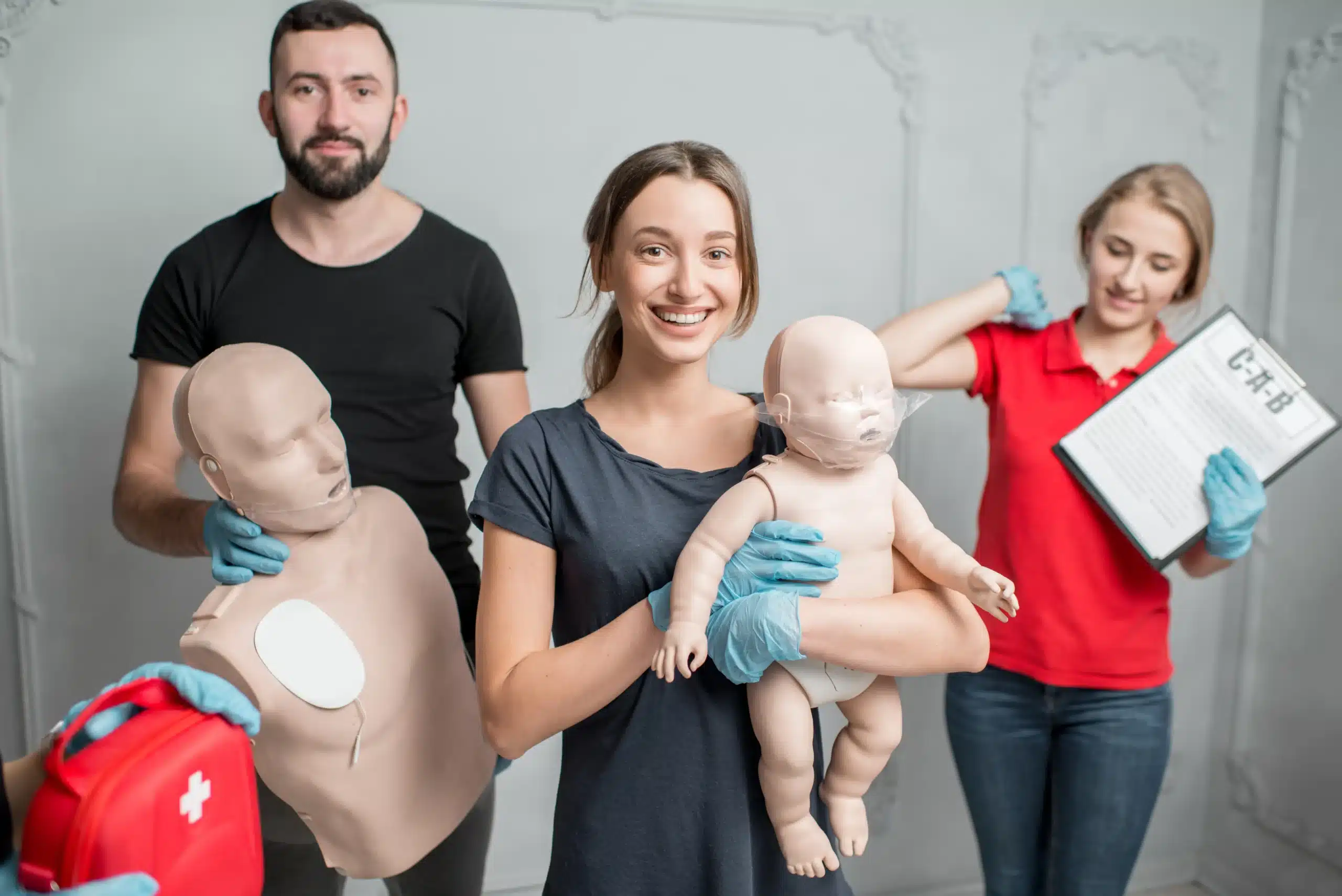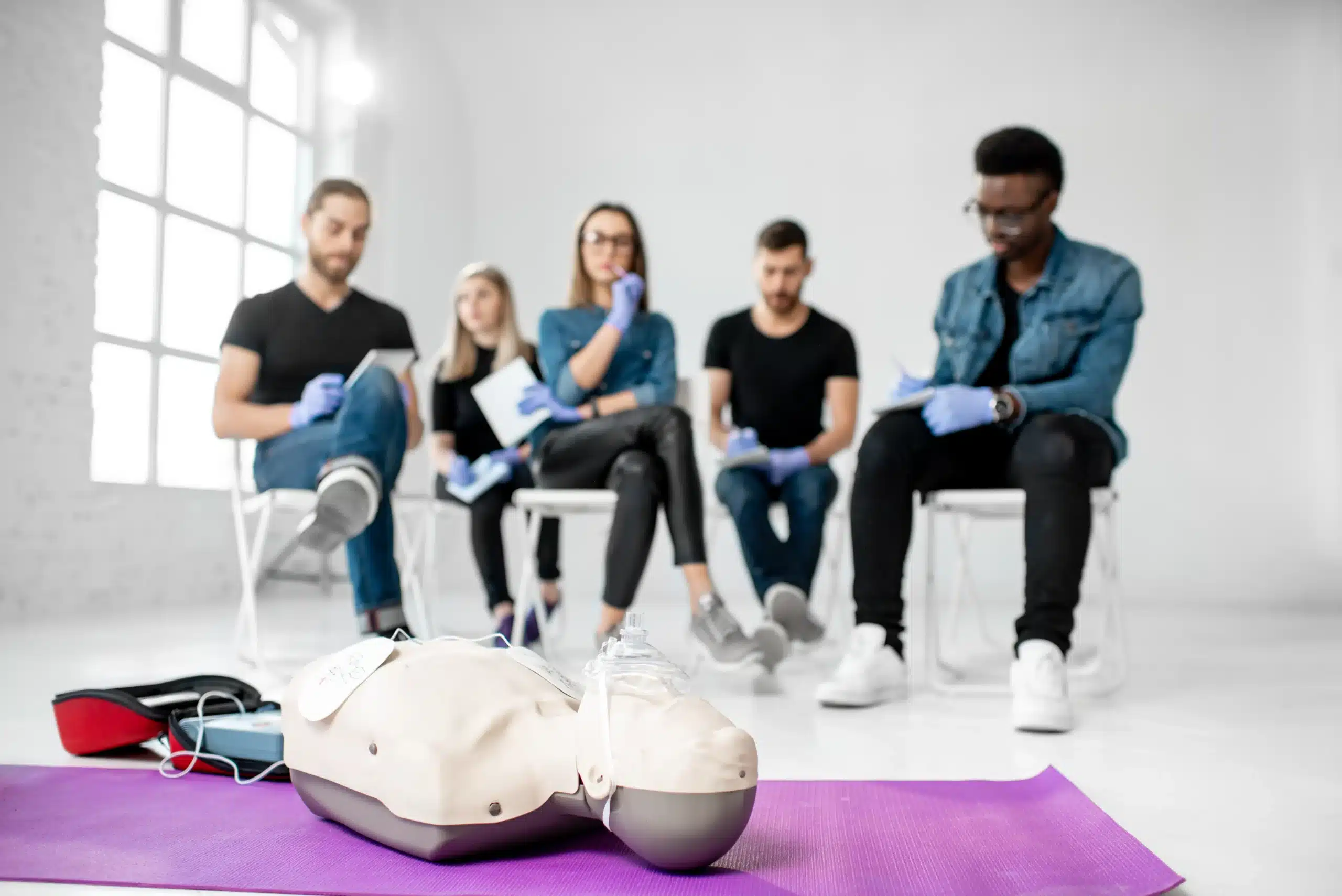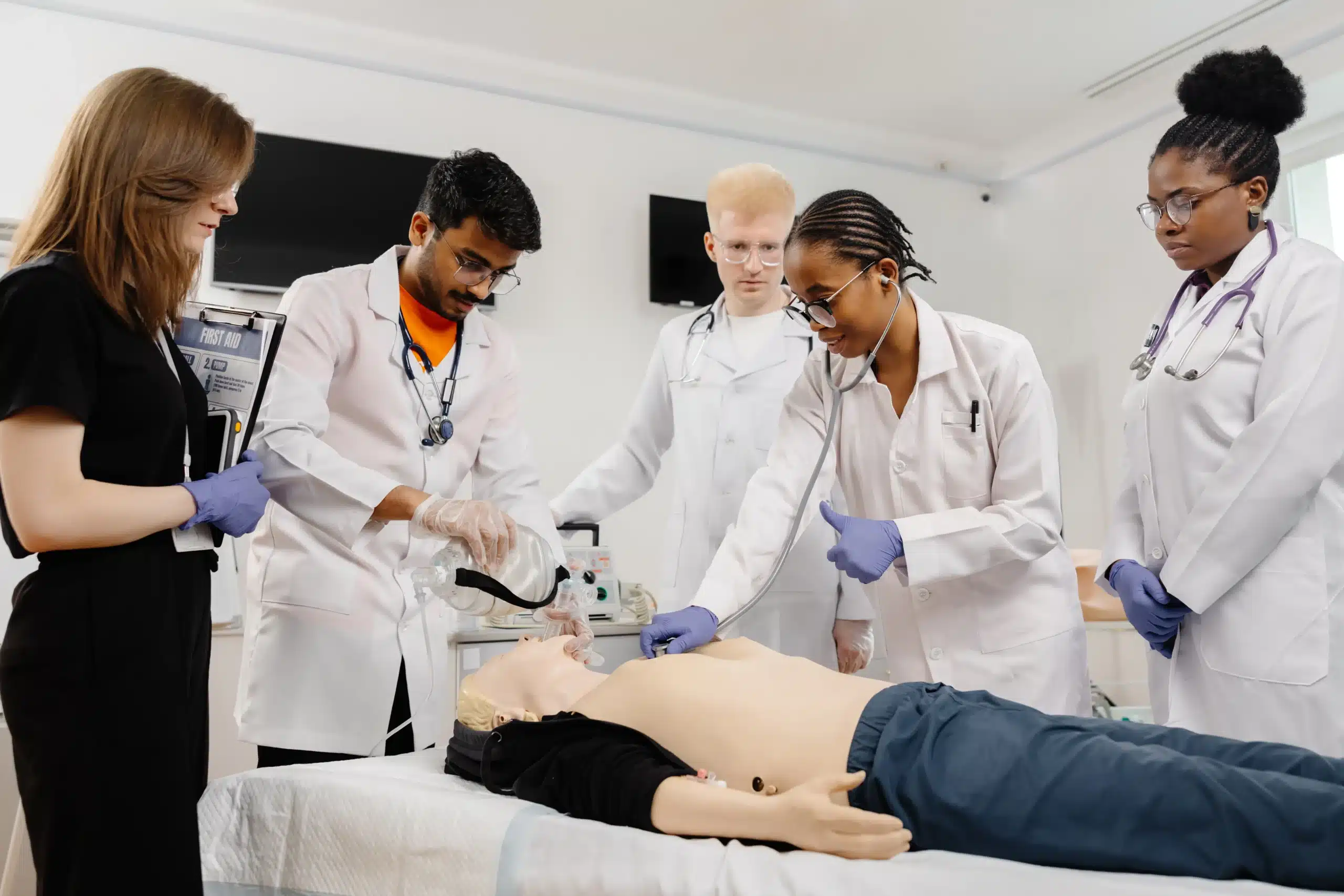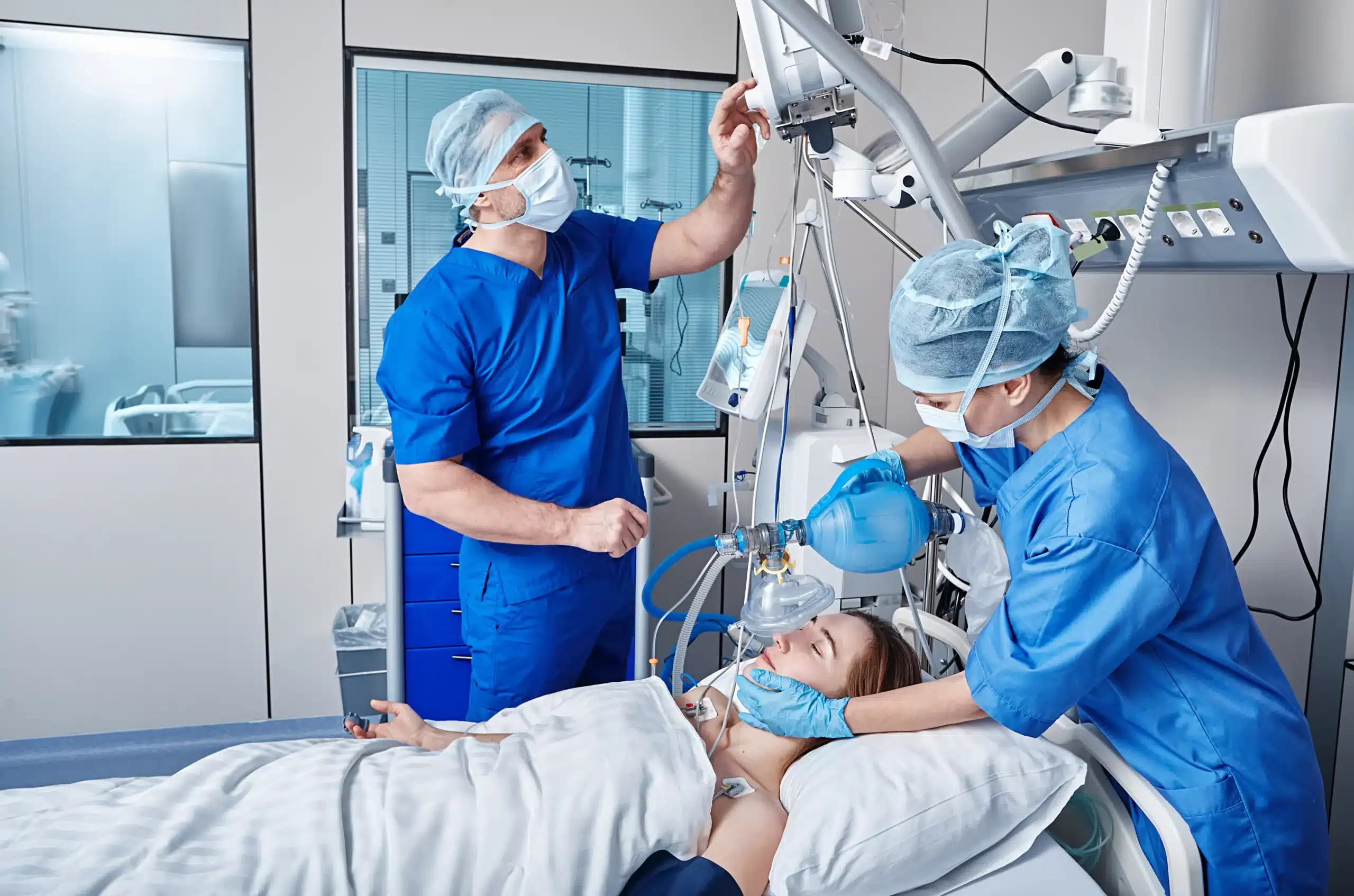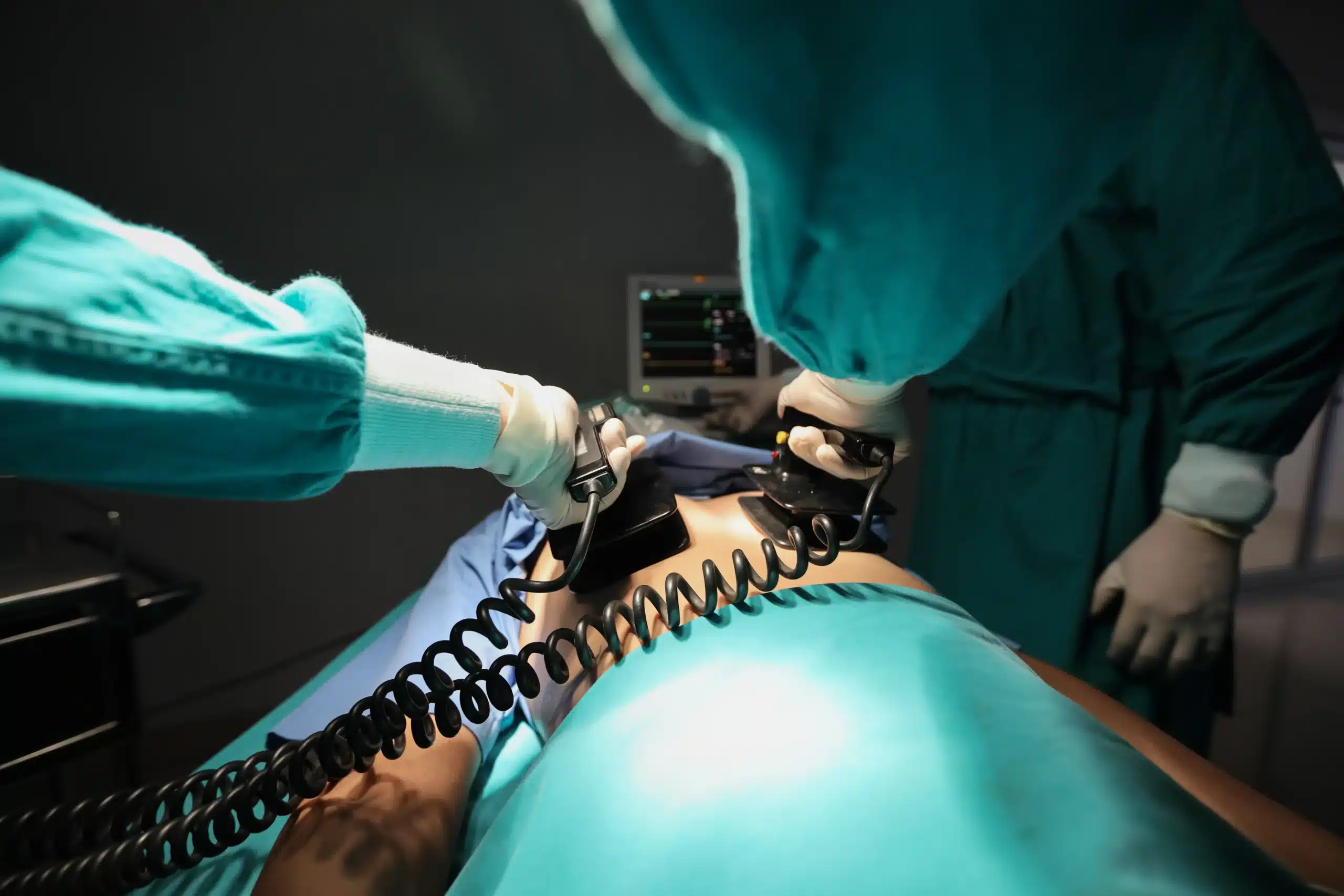Emergencies can happen anytime, anywhere, and being prepared can make all the difference. This guide is your one-stop resource for CPR and first-aid training in Danville. We’ll break down the different types of CPR and first-aid courses available, from basic life support to advanced cardiovascular life support, and help you choose the right certification for your needs. We’ll also discuss the costs of training, how to find reputable providers in Danville, and what to expect during a typical CPR and first-aid class. Plus, we’ll explore the many benefits of getting certified, how to maintain your certification, and even how to get involved in community events that promote CPR and first-aid awareness in Danville.
Key Takeaways
- CPR and first aid skills empower you to handle emergencies: Equipping yourself with these skills, from basic to advanced levels like ACLS and PALS, allows you to confidently respond to various medical situations.
- Finding suitable training is straightforward: Numerous established organizations, including San Ramon CPR Courses and the American Red Cross, offer a range of certification courses. Research local options and compare what each provides.
- Maintaining your certification is crucial: Regularly renew your certification and pursue continuing education to stay current with evolving guidelines and ensure your skills remain sharp.
What is CPR and First Aid?
CPR (Cardiopulmonary Resuscitation) and first aid are both emergency, life-saving techniques, but they address different situations. CPR is specifically for when someone is unconscious and not breathing, or only gasping (cardiac arrest). First aid covers a much wider range of injuries and illnesses, from minor cuts and burns to more serious situations like choking or a sudden allergic reaction. Think of CPR as a very specific tool in your first-aid kit. Both are essential skills that can help you save a life. Learn more about the differences between CPR and first aid.
BLS
The BLS (Basic Life Support) course provides healthcare providers and other professionals with the skills to perform high-quality CPR for adults, children, and infants. It also covers AED (Automated External Defibrillator) use and airway management techniques. BLS certification is often a prerequisite for other advanced certifications, like ACLS and PALS, and is a valuable asset in many healthcare and professional settings. You can find more information on local BLS certification courses.
Heartsaver CPR AED
The Heartsaver CPR AED course is designed for anyone who wants to learn how to perform CPR and use an AED. This course doesn’t require any previous medical experience and is suitable for community members, workplace responders, and those who want to be prepared for emergencies. It focuses on the essential skills needed to recognize and respond to cardiac arrest and other life-threatening situations. Check with your local training centers for Heartsaver CPR AED courses.
Pediatric CPR and First Aid
Pediatric CPR and first aid courses focus on providing care for infants and children. These courses teach participants how to recognize and respond to emergencies such as choking, breathing difficulties, and cardiac arrest in young children. PALS (Pediatric Advanced Life Support) is a more advanced course focusing on pediatric emergencies. It’s designed for healthcare providers who regularly care for infants and children. You can find more information on Pediatric first aid courses in your area.
ACLS
ACLS (Advanced Cardiovascular Life Support) builds upon the skills learned in BLS. This advanced course focuses on team dynamics, high-performance CPR, post-cardiac arrest care, and advanced airway management techniques. It’s designed for healthcare professionals who are involved in the management of cardiopulmonary arrest or other cardiovascular emergencies. Find ACLS courses near you.
NRP
The NRP (Neonatal Resuscitation Program) course is specifically designed for healthcare providers who care for newborns at the time of delivery and immediately after birth. This specialized training covers the essential skills needed to assess and resuscitate newborns, ensuring they receive the best possible care during this critical period. NRP certification is crucial for professionals working in labor and delivery, neonatal intensive care units, and other newborn care settings.
Find CPR and First Aid Training in Danville
Finding the right CPR and first-aid training can feel overwhelming, but several excellent resources are available in and around Danville. Here’s a rundown of some popular options to help you find the best fit:
San Ramon CPR Courses
San Ramon CPR Courses offers a range of American Heart Association (AHA) certifications, including BLS, ACLS, PALS, and CPR/First Aid. With a focus on affordability and convenience, classes are held at Bishop Ranch 1, making them easily accessible for those in the San Ramon, Dublin, and Danville areas. For more details, explore their CPR and first-aid certification courses. They also offer group discounts and a low-price guarantee.
American Red Cross
The American Red Cross is a well-known provider of first-aid and CPR training, offering a blended learning approach that combines online coursework with in-person skills sessions. Their online instructor bridge program allows qualified instructors to become certified as American Red Cross First Aid/CPR/AED instructors.
Danville Area Training Center (DATC)
The Danville Area Training Center (DATC) provides various CPR, first aid, and EMS training courses. Known for their state-of-the-art facility, they train thousands of healthcare providers and community members every year. Visit the DATC website to see their course catalog.
Safety Training Seminars
Safety Training Seminars offers AHA-certified CPR, BLS, ACLS, and PALS courses in Danville. They offer on-site classes, making it convenient for workplaces or groups. Learn more about their Bay Area CPR classes.
CPR Education
CPR Education, developed by firefighters, focuses on making CPR training accessible to everyone. They offer various courses designed to equip individuals with the skills to respond confidently in emergencies. Explore their Danville CPR and first-aid training options.
Costs and Registration
CPR and first-aid training is an investment in your skills and the well-being of your community. Understanding the costs and how to register can help you get started.
Course Prices
CPR class costs vary depending on the type of certification, the training provider, and what’s included. Basic CPR and first-aid certification will typically be less expensive than advanced certifications like ACLS or PALS. This allows you to choose a course that fits your budget and needs. Contact different providers, including San Ramon CPR Courses, to compare pricing.
Group Discounts
Many CPR training providers offer reduced rates for group bookings. This is a great option for businesses, schools, community groups, or even a group of friends. Check with providers in your area, including Safety Training Seminars, to see if they offer group discounts.
Register for a Course
Registering for a CPR or first-aid class is usually straightforward. Many providers offer online registration, allowing you to easily find a class time that works for you. San Ramon CPR Courses offers a variety of courses throughout the week, making it convenient for those in the San Ramon, Dublin, and Danville areas. You can often find information about upcoming courses and registration details directly on the provider’s website.
What Happens in Training?
Want to know what to expect during your CPR or first-aid training? Here’s a quick overview of a typical class, from course structure and hands-on practice to getting your certification.
Course Format
CPR and first-aid courses are designed to be interactive and engaging. They typically combine instructor-led presentations, demonstrations, and hands-on practice. You’ll learn essential lifesaving skills, such as recognizing the signs of a heart attack, performing CPR on adults, children, and infants, and using an AED. Many courses, like those at San Ramon CPR Courses, follow American Heart Association (AHA) guidelines and cover various topics, from basic CPR and first aid to advanced life support techniques like BLS, ACLS, and PALS. Some providers also offer specialized courses like the EMSA Child Care Health & Safety program. Depending on the course, classes can be held at various locations or even at your workplace.
Practice Sessions
Hands-on practice is crucial to any CPR and first-aid training. You’ll practice your skills on mannequins in a safe and controlled environment, helping you build muscle memory and confidence. For healthcare providers looking to maintain their skills, programs like the RQI program offer a flexible and efficient way to refresh their knowledge and practice techniques regularly. These sessions reinforce the skills you’ve learned and prepare you to respond effectively in a real-life emergency.
Get Certified
After successfully completing your course, you’ll receive a certification card. This card shows you’ve met the requirements and are qualified to provide CPR and first aid. Remember that certification requirements and processes vary depending on the organization providing the training. Choose a reputable provider like San Ramon CPR Courses, which issues AHA-compliant certification cards upon completion. This ensures your certification is widely recognized and accepted.
Instructor Expertise
Knowing your instructor’s qualifications is key when choosing a CPR and First Aid class. Experienced, certified instructors can make all the difference in your learning experience. Here’s what to look for:
Certification Requirements
Becoming a certified CPR instructor involves rigorous training. Organizations like the American Red Cross and the National Safety Council offer comprehensive instructor development programs. These programs often include prerequisites, like current CPR certification, and require candidates to demonstrate practical skills and teaching proficiency. For example, the Red Cross offers a blended learning approach with online components and in-person skill evaluations. Aspiring instructors must also complete background checks and adhere to specific ethical guidelines.
Practical Experience
Certification is just the first step. Look for instructors with real-world experience. Many instructors maintain their skills by regularly teaching courses and participating in refresher training. Experienced instructors can offer practical insights and answer your questions based on real-life scenarios. They can also provide more effective feedback during practice sessions, helping you build confidence in your abilities. Instructors often recertify to stay up-to-date with the latest guidelines and techniques. This ensures they can provide students with the most relevant and effective training.
Continuing Education
The field of CPR and First Aid is constantly evolving. High-quality instructors commit to ongoing learning to stay current with the latest research and best practices. They might participate in advanced training courses, attend industry conferences, or engage in online continuing education programs. This dedication to continuous improvement ensures they provide students with the most accurate and effective training possible. Look for instructors who actively pursue professional development opportunities to maintain their expertise. This commitment to lifelong learning benefits both the instructor and their students.
Benefits of CPR Certification
Getting CPR certified isn’t just about acquiring a skill; it’s about empowering yourself and contributing to a safer community. Whether you’re a healthcare professional, a childcare provider, or simply someone who wants to be prepared, CPR certification offers a range of valuable benefits.
Respond to Emergencies
Emergencies can happen anytime, anywhere. CPR and first-aid training equips you with the knowledge and skills to respond effectively in critical situations. From a heart attack at a local restaurant to a choking incident at a family gathering, your ability to administer CPR or first aid can make a life-saving difference. These courses cover essential techniques and procedures, giving you the confidence to act quickly and decisively when every second counts. Learn more about our CPR and first-aid certification courses.
Advance Your Career
For many professions, CPR certification is a requirement. Healthcare providers, educators, coaches, and childcare professionals often need this credential to pursue or maintain their careers. Even if it’s not mandatory, having CPR certification on your resume demonstrates your commitment to safety and preparedness, which can give you an edge. The American Heart Association RQI program is a popular choice for medical professionals seeking BLS, ACLS, and PALS certifications.
Improve Community Safety
CPR-certified individuals contribute to a safer and more resilient community. Bystanders who know CPR can provide immediate assistance before professional help arrives, significantly increasing the chances of survival for cardiac arrest victims. Learn more about how you can get involved with the American Heart Association, which offers resources and initiatives to promote community health and safety. Your participation in CPR training can have a ripple effect, inspiring others to learn these life-saving skills and creating a network of prepared individuals ready to respond to emergencies.
Maintain Your Certification
Keeping your CPR and First Aid certifications current is key to confidently handling emergencies. Knowing the renewal process and staying up-to-date on the latest techniques ensures you’re always prepared.
Renewal Requirements
CPR and First Aid certifications don’t last forever. They typically expire after two years, so understanding the renewal process is essential. Check with your certifying organization, such as the American Heart Association or the American Red Cross, for specific requirements. Generally, renewal involves completing a refresher course that covers the latest guidelines and techniques. For instructors, maintaining certification often includes teaching a minimum number of classes and completing continuing education activities, as described in resources like this guide on becoming a Red Cross CPR instructor. This ensures instructors stay proficient and knowledgeable in their field.
Continuing Education
Even after renewing your certification, ongoing learning is crucial. Techniques and best practices in CPR and First Aid can change, so staying informed is essential for providing effective care. Look for continuing education opportunities offered by organizations like Safety Training Seminars, which provide AHA-certified courses. The American Heart Association’s RQI (Resuscitation Quality Improvement) program is another excellent option, particularly for healthcare professionals. These programs offer convenient ways to stay sharp and confident in your skills. Consider incorporating RQI classes into your professional development to ensure you’re always prepared to respond effectively in an emergency. Staying current with the latest advancements can significantly impact the outcome of a critical situation.
CPR and First Aid Events
Want to get more involved in CPR and first aid awareness in your community? Several events and initiatives offer opportunities to learn, connect, and support these life-saving skills. Here are a few to explore:
Heart Walk
The annual Heart Walk is a powerful community event organized by the American Heart Association. It brings people together to raise funds for vital research, CPR training, and medical advancements that combat heart disease and stroke. Participating in the Heart Walk supports a great cause and raises awareness about heart health in our local communities.
Save a Life Initiative
The Save a Life Initiative is a non-profit organization committed to equipping individuals and communities with the skills and knowledge to save lives. They focus on increasing access to CPR and first aid training and promoting a culture of preparedness. Check out their website to see how you can get involved.
CPR & AED Awareness Week
National CPR and AED Awareness Week is a dedicated week to highlight the importance of CPR and AEDs (Automated External Defibrillators). The American Heart Association offers free resources and materials for communities to spread awareness and encourage people to learn CPR. This is a great time to find local training events and refresh your skills.
CPR and First Aid Myths
Let’s clear up some common misconceptions about CPR and first aid training. These myths can prevent people from getting certified and being prepared to help in an emergency.
“CPR is Only for Healthcare Professionals”
It’s easy to think CPR training is just for doctors and nurses, but that’s not the case. Anyone can learn CPR—parents, teachers, coaches, office workers—your profession doesn’t matter. In fact, having more people in a community trained in CPR can significantly improve survival rates from cardiac arrest. San Ramon CPR Courses offers a range of CPR classes, from basic to advanced, so you can find the right level for your needs. Knowing CPR can empower you to save a life, even before professional help arrives.
“Online CPR Courses Aren’t Valid”
While in-person training has its benefits, don’t dismiss online CPR courses. Many online programs offer comprehensive instruction and meet American Heart Association guidelines, making them a perfectly valid option for certification. Online learning offers flexibility, allowing you to learn at your own pace and on your own schedule. If you’re looking for a convenient way to get certified, an online CPR course might be a great fit.
“Certification is a One-Time Event”
CPR and first aid techniques and best practices can change, so your certification isn’t something you do once and never again. Regular renewal is essential to stay up-to-date and maintain your skills. Recertification courses often cover new guidelines and refresh your knowledge, ensuring you’re prepared to respond effectively in an emergency. Check with your certifying organization, such as the American Red Cross, for specific renewal requirements.
Related Articles
- CPR & First-Aid Training in Dublin: A Complete Guide – San Ramon CPR Classes
- BLS Certification in Danville: Your Guide – San Ramon CPR Classes
- CPR Training in Dublin: Your Guide – San Ramon CPR Classes
- Pediatric CPR & First Aid Training in Danville – San Ramon CPR Classes
- ACLS Courses in Danville: Your Complete Guide – San Ramon CPR Classes
Frequently Asked Questions
What if I’m nervous about performing CPR in a real emergency? It’s completely normal to feel apprehensive about using CPR in a real-life situation. That’s why practicing during training is so important. Hands-on practice builds muscle memory and confidence, helping you react more effectively under pressure. Remember, any attempt at CPR is better than none. Your willingness to act can make a significant difference.
Which CPR certification is right for me? Choosing the right CPR certification depends on your specific needs. If you’re a healthcare professional, BLS, ACLS, or PALS might be required. For community members or those wanting general knowledge, a Heartsaver CPR/AED course is a great option. If you work with infants, NRP certification is essential. Consider your current role and future career goals when deciding.
How can I find a CPR class near me? Several organizations offer CPR classes, including the American Red Cross, the American Heart Association, and local training centers. A quick online search for “CPR classes near me” can help you find options in your area. Also, check with community centers, hospitals, and fire departments, as they often host training sessions.
What does CPR certification cost? The cost of CPR certification varies depending on the course type and the training provider. Basic CPR courses are generally less expensive than advanced certifications like ACLS or PALS. Many providers offer group discounts, so inquire about those if you’re registering with friends, family, or colleagues.
How long does CPR certification last, and how do I renew it? Most CPR certifications are valid for two years. To renew, you’ll need to take a recertification course. This ensures your skills are up-to-date with the latest guidelines. Contact your certifying organization or training provider for specific renewal requirements and available courses.
